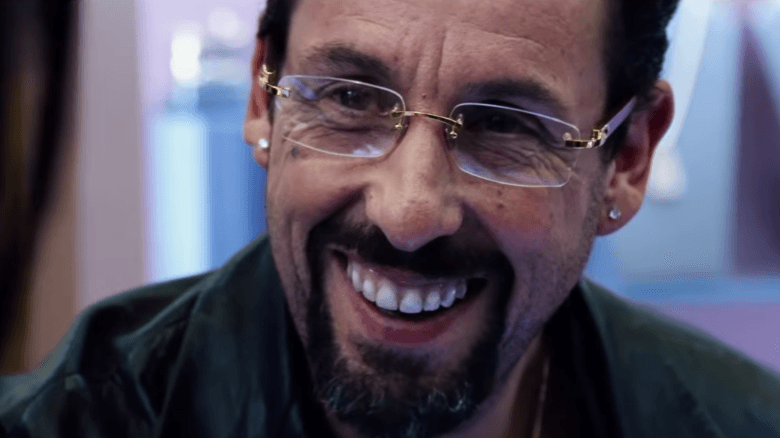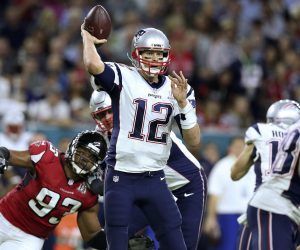Uncut Gems, the new movie starring Adam Sandler, may have transformed the box-office buffoon into a bona fide actor, but the way sports gambling is portrayed makes the film an excruciating test of endurance. Here are some ridiculous inaccuracies that make this film virtually unwatchable …

The Hustler, released in 1961, still stands as the greatest gambling movie ever made.
One of the reasons it remains so revered by critics and movie aficionados, and is still so mesmerizing to watch nearly six decades after its release, is the gritty sense of realism portrayed in the film from beginning to end. Paul Newman stars and plays pool hustler “Fast Eddie” Felson. He meets his match against legendary “Minnesota Fats,” a real pool icon played by Jackie Gleason. The steely-eyed George C. Scott, in the role of Felson’s cutthroat manager, adds an exclamation point to what can best be described as cinematic perfection.
However, The Hustler’s most powerful attribute, aside from its all-star cast, is the way gambling scenes are scripted. Viewers believe the accuracy of every pool shot made and missed, and can count every last dollar that crosses the green felt. It’s real.
This authenticity resulted from a real pool shark named Willie Mosconi being hired as the film’s “technical advisor.” According to lore, Mosconi’s task was to ensure every line and every scene was a reflection of what really went on in pool halls, and in the art of hustling. Hence, The Hustler isn’t just credible. In many ways, it’s incredible since Hollywood long ago abandoned any concern for reality when it comes to the way gambling (and gamblers) are portrayed in cinema.
The First Cut is the Deepest
Uncut Gems, starring alleged funnyman Adam Sandler in a very different kind of role, is the latest example of Hollywood being either too lazy or careless to even attempt showing the realities of gambling. The film is about a scumbag who works as a gemstone dealer in New York’s shady diamond district. Because of his gambling and his lifestyle, he gets into serious financial trouble, and makes a number of nosebleed-level sports wagers to try and get out of the hole. Note: I’ll leave out additional details, and won’t divulge any spoilers.
So, what’s the problem?
Just about everything related in any way whatsoever to sports betting in the movie is wrong and/or implausible. In other words, it either couldn’t, or wouldn’t, happen. Ever.
Aside from all suspension of realism, I suppose the movie is somewhat watchable, if you like movies about scumbags. But, I digress.
Consider the first high-stakes wager made by Sandler’s character, Howard Ratner. He bets a six-leg parlay that’s so preposterous in so many different aspects that it renders the entire episode a complete farce. Unfortunately, this is an important part of the film. Ratner bets on the NBA’s Boston Celtics to “win the opening tipoff.” If anyone has seen any licensed sportsbook anywhere in the world allow betting on the “tipoff” of a basketball game, please e-mail me. I’d like to hear about it.
But that’s the least of the multitude of absurdities. Ratner is allowed to bet on the Celtics in the first half (money line), the point spread (-1), and three individual player props related to the star player, Kevin Garnett (who appears in the movie). Please, no jokes about garnet, the name of a rare gemstone.
There’s no sportsbook or bookie, anywhere, legal or illegal, offshore or stateside, that would allow any bettor to wager on a six-leg parlay of this kind. It simply wouldn’t be possible. It’s laughable. Blair Rodman, a longtime Las Vegas-based sports gambling professional, summed it up best:
“I know of no book, legal or illegal, that would accept this parlay. For one thing, I’ve never seen a book that allows parlays on player props, let alone something like the tip-off. And that’s not the only reason you couldn’t get action on this bet. Another problem is that these propositions are correlated to some degree. Books shun correlated parlays, and for good reason.”
If anything, Rodman was too kind in his review and remarks. The bottom line is — everything about this wager is baffling. Which begs the question — why couldn’t scriptwriters simply have Ratner make a large bet that was realistic?
Ignorance? Confusion? Laziness?
Who knows?
The story also includes something called a “lightning bet,” which is a term I’ve never heard in all of my 30 years of being involved in sports gambling. Rodman, who’s been around the gambling since the early 1980s, and who was equally appalled by the film, had never heard this term either.
This film isn’t just fiction. It’s a farce.
No Diamond in the Rough, More Like Fool’s Gold
Let’s agree that movies should, and perhaps must, add, subtract, alter, and exaggerate things. Indeed, “creative license” is mandatory in the making of a good movie.
Trouble is, Uncut Gems doesn’t merely add, subtract, alter, or exaggerate. It obliterates reality.
Consider another preposterous scene much later in the film when Ratner’s girlfriend drives to the Mohegan Sun Casino (in Connecticut) to make a multi-leg parlay wager. Most parlays are capped at perhaps a few thousand dollars, at most. Also, never mind that Connecticut didn’t have legalized sports wagering in 2012 when this film is set. The mistakes just keep piling up.
Somehow, the girlfriend hoists a huge bag of money to the casino where the wager is accepted without batting an eye. Rodman again best sums up the absurdity of the situation:
“…. she just dumped a bag containing about $165K on the counter to make the last parlay, and the book accepted it, and paid it off when it won with no questions and no Cash Transaction Report (CTR).”
What Rodman is referring to is a “CTR,” which is standard practice on all cash transactions over a certain amount (usually $10,000 in cash). Instead, Ratner’s girlfriend makes the bet and cashes the ticket like she’s picking up a Grande Latte at Starbucks.
Conclusion (Duh!): When Making a Movie With Gambling, Hollywood Should Hire a Gambling Consultant
Uncut Gems reportedly cost $45 million to make, which makes me wonder out loud: If the filmmakers had a raw diamond worth $45 million, wouldn’t they at least hire a professional gem cutter instead of winging it themselves?
Why didn’t the scriptwriter and/or production company consult someone with experience and expertise who might have provided some sense of guidance? Surely, there were (and are) hundreds, if not thousands, of WIllie Mosconi-like figures connected to the sports gambling scene who could have saved this film from embarrassment. It couldn’t possibly be about money, either. Most sports gambling experts would probably work for scale wages just to be associated with a big Hollywood movie. Including me.
Perhaps it’s just a combination of laziness and indifference.
Ultimately, Uncut Gems, if it’s remembered at all, will be just another bad gambling movie, the sooner forgotten, the better. Indeed, as sports gambling grows across the country, and with multiple generations, and familiarity with the subject matter increases, the unnecessary inaccuracies of the movie will become even more obvious.
Here’s some advice: When making a film about sports betting, hire a real sports bettor.
Contact Nolan Dalla at: nolandalla@gmail..com










